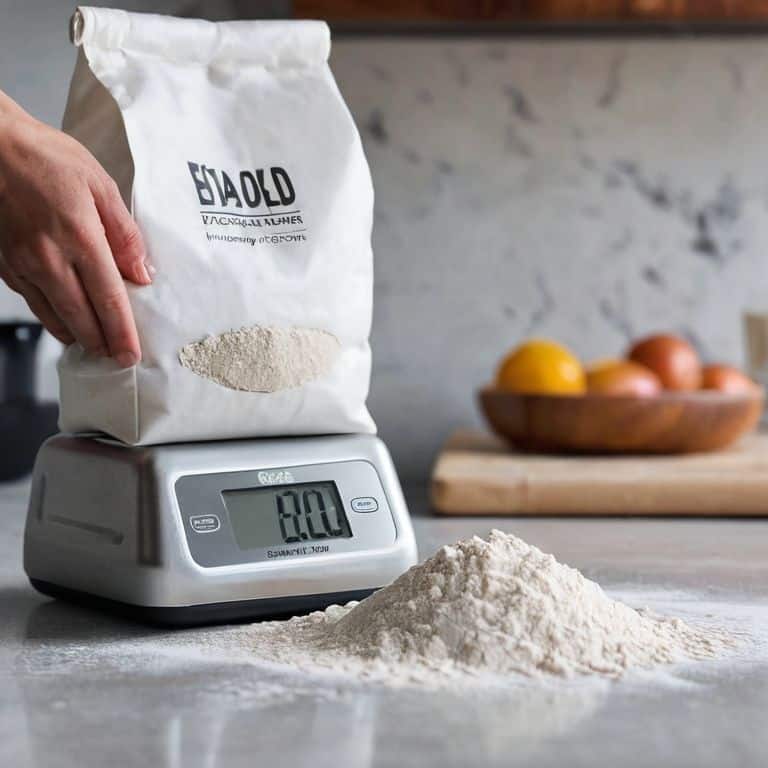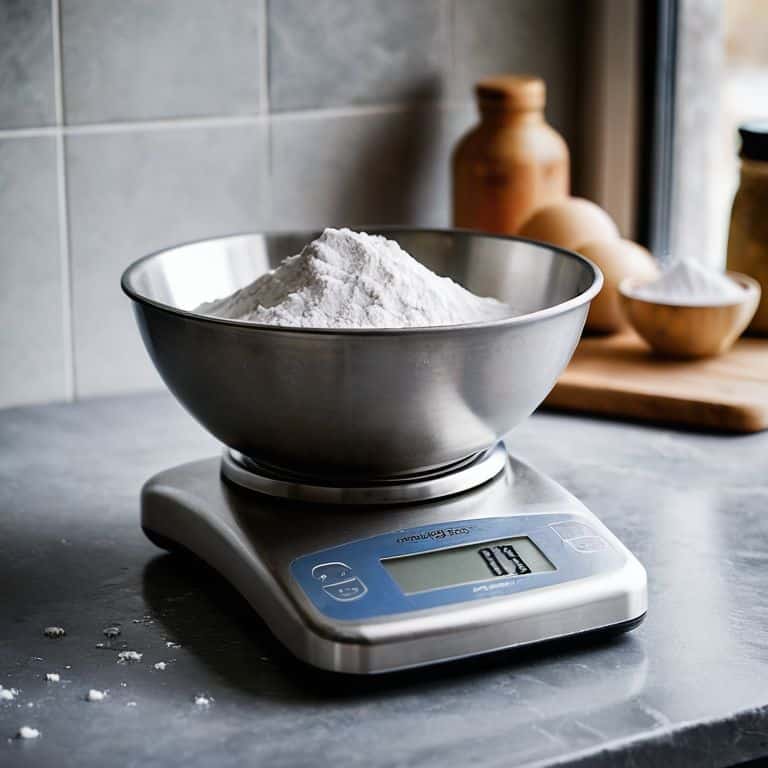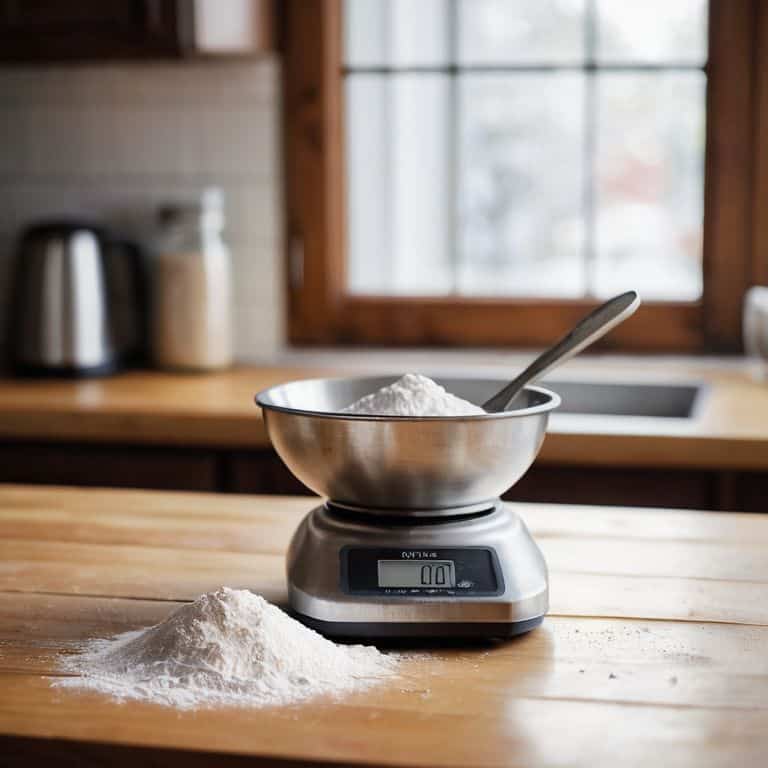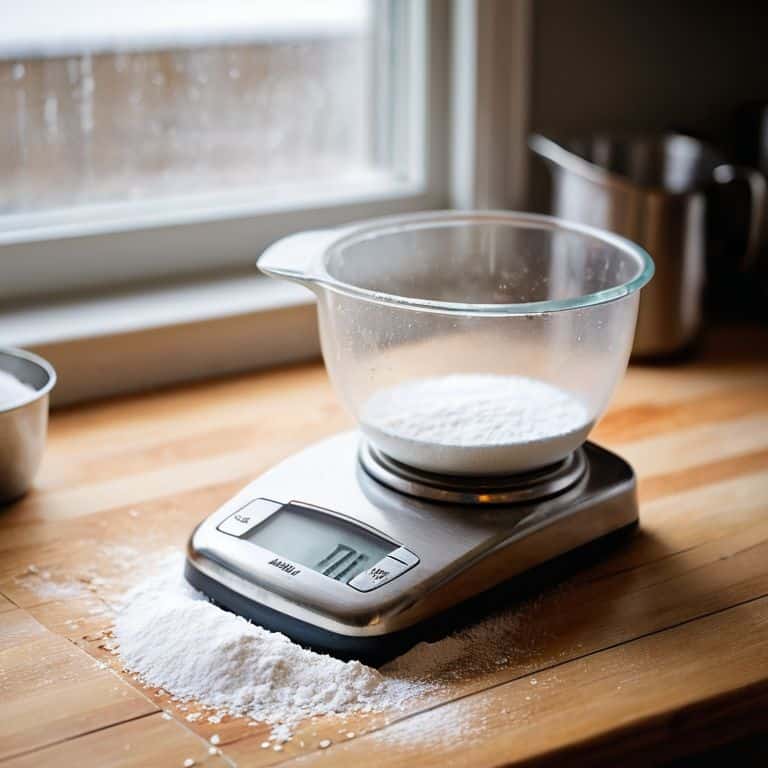As a flight instructor, I’ve learned that precision is key in every aspect of life, not just in the cockpit. That’s why I’m always surprised by how many people struggle with something as simple as how to measure flour correctly. The truth is, measuring flour is not as straightforward as it seems, and using the wrong technique can be like navigating through turbulence – it can throw off your entire recipe. I’ve seen it time and time again in my own kitchen, where a simple mistake can lead to a batch of disappointing treats.
In this article, I’ll share my no-nonsense approach to measuring flour, learned from years of teaching students the fundamentals of flight. You’ll learn how to measure flour correctly, without any fancy gadgets or complicated techniques. I’ll walk you through a step-by-step process that’s easy to follow, even for a beginner. By the end of this guide, you’ll be equipped with the knowledge to tackle any recipe with confidence, and bake like a pro. Whether you’re a seasoned baker or just starting out, this article will provide you with the practical advice you need to master the art of measuring flour.
Table of Contents
Guide Overview: What You'll Need

Total Time: 5 minutes
Estimated Cost: $0 – $5
Difficulty Level: Easy
Tools Required
- Digital Kitchen Scale (optional)
- Measuring Cups (dry and liquid)
- Spoon or Scoop (for scooping flour)
Supplies & Materials
- Flour (the type you are measuring)
- Flat Surface (for leveling off flour)
Step-by-Step Instructions
- 1. First, let’s get started by preparing our workspace, just like a pilot prepares for takeoff. Clear a flat surface, like a countertop, and gather our necessary tools: a digital kitchen scale, a measuring cup, and a spoon for scooping. This is our cockpit, and we need to ensure it’s organized and clutter-free to avoid any mistakes.
- 2. Next, we need to understand the _importance of accurate measurement_. Measuring flour is not just about throwing some flour into a cup; it’s about precision, just like navigating through a narrow mountain pass in a small plane. Too little or too much flour can alter the entire recipe, so we must be precise.
- 3. Now, let’s move on to choosing the right tool for the job. If you have a digital kitchen scale, use it. Weighing ingredients is the most accurate method, just like using GPS for navigation. If you don’t have a scale, a measuring cup is your next best bet. However, remember that measuring cups can be less accurate due to the varying densities of ingredients.
- 4. For those using a measuring cup, the technique is crucial. To measure flour correctly, scoop the flour into the measuring cup using a spoon, and then level it off with a straight edge or the back of a knife. Don’t pack the flour down, as this can increase the density and throw off your measurements. It’s like maintaining the right airspeed; too much or too little can lead to trouble.
- 5. If you’re using a digital scale, zero out the weight of your container before adding the flour. This ensures that you’re only measuring the flour, not the container itself. It’s a simple step but crucial for accuracy, just like calibrating your instruments before flight.
- 6. Once you’ve measured your flour, whether by weight or volume, double-check your work. This is like running through your pre-landing checklist; you want to ensure everything is in order before proceeding. Verify that you have the correct amount and that it’s been measured accurately.
- 7. Finally, store your flour properly to maintain its quality and ensure consistent measurements over time. Flour can absorb moisture and odors from the air, which can affect its performance in recipes. Store it in an airtight container in a cool, dry place, just like securing your aircraft in a hangar after a flight. This final step might seem minor, but it’s essential for long-term success in your baking endeavors.
Mastering Flour Measurement

As we delve deeper into the world of baking, it’s essential to understand the importance of accurate dry ingredient measurement. Just like navigating through dense fog, measuring flour requires precision and attention to detail. A slight miscalculation can throw off the entire recipe, leading to disappointing results. To avoid this, I recommend investing in flour measurement tools such as a digital kitchen scale, which provides a more precise measurement than traditional methods.
When using a digital kitchen scale, it’s crucial to convert volume to weight recipes to ensure consistency. This is especially important when making delicate desserts like cakes, where precise measurement for cake recipes is key. By taking the time to understand the nuances of flour measurement, you’ll be able to produce baked goods that are not only delicious but also consistent in texture and flavor.
In my experience as a flight instructor, I’ve seen how common baking measurement mistakes can be avoided by following a simple checklist. Similarly, when measuring flour, it’s essential to have a clear understanding of the recipe and the tools at your disposal. By doing so, you’ll be able to master the art of flour measurement and take your baking to new heights, just like a plane soaring through the skies with ease and precision.
Accurate Dry Ingredient Tips
When measuring dry ingredients like flour, it’s crucial to level off the excess. Think of it like adjusting your aircraft’s altitude – you need to fine-tune to reach the perfect height. To do this, use a straight edge or the back of a knife to scrape off any extra flour. This ensures you’re working with the exact amount called for in the recipe.
I also recommend using a digital scale for added precision, especially when working with large quantities. It’s like having a trusty co-pilot, helping you navigate the recipe with ease. By combining accurate measurement techniques with the right tools, you’ll be well on your way to achieving consistent results in your baking.
Digital Scale Benefits
Using a digital scale is like having a trusty co-pilot in the kitchen – it’s got your back when it comes to accuracy. With a digital scale, you can measure flour to the exact gram, taking the guesswork out of your recipes. This is especially important when you’re working with delicate balances of ingredients, like in cake recipes or pastry dough. By investing in a digital scale, you’ll be able to reproduce your favorite recipes with consistency and precision, just like a well-executed flight plan.
I’ve found that digital scales are also incredibly convenient, allowing you to easily switch between units and calculate measurements with the touch of a button. This simplicity is a game-changer, much like how a well-organized cockpit can make all the difference in a pilot’s ability to navigate complex situations. With a digital scale, you’ll be free to focus on the art of baking, rather than getting bogged down in tedious measurements.
Plotting a Safe Course: 5 Essential Tips for Measuring Flour
- Use the scoop and sweep method with a digital scale as a backup to ensure accuracy, just like using navigation instruments to cross-check your position
- Choose the right flour for the job, considering factors like protein content and grind size, much like selecting the correct aircraft for a specific mission
- Avoid scooping flour directly from the bag or container, as this can lead to inconsistent measurements, similar to how turbulence can throw off your altitude readings
- Level off your flour measurements using a straight edge or knife, just as you would use a horizon line to gauge your aircraft’s orientation
- Calibrate your measuring tools regularly, whether it’s a digital scale or a set of measuring cups, to ensure they remain accurate, much like performing routine maintenance on your aircraft’s instruments
Key Takeaways for Accurate Flour Measurement
Measure flour like you navigate through turbulence – with precision, using a digital scale to ensure accuracy and avoid common mistakes
Mastering flour measurement is a fundamental skill, just like understanding the basics of flight, it requires patience, attention to detail, and practice to get it right every time
By following simple steps and using the right tools, you can avoid the pitfalls of inaccurate flour measurement, ensuring your recipes take off smoothly, just like a well-planned flight
The Key to Recipe Success
Measuring flour is like plotting a flight plan – you need to be precise, or you’ll end up lost in a cloud of culinary confusion, so take the time to get it just right and you’ll be soaring to new heights in the kitchen!
Daniel Sato
Landing Safely with Accurate Measurements

As we touch down on our journey to mastering flour measurement, let’s do a quick flyby of the key points we’ve covered. We’ve discussed the importance of accurate dry ingredient tips, including the benefits of using a digital scale. By following these steps and tips, you’ll be well on your way to becoming a proficient baker, capable of navigating even the most complex recipes with ease. Remember, measuring flour is like navigating through turbulence – it requires precision and patience, but with practice, you’ll get the hang of it.
As you take to the skies of baking, keep in mind that practice makes perfect. Don’t be discouraged if your first few attempts at measuring flour don’t yield the desired results. With time and experience, you’ll develop a keen sense of what works and what doesn’t, and you’ll be able to apply these skills to a wide range of recipes. So go ahead, take the controls, and remember that the art of baking is all about experimentation, creativity, and having fun – and with accurate flour measurement, the sky’s the limit!
Frequently Asked Questions
What is the best way to scoop flour into a measuring cup without compacting it?
Scooping flour into a measuring cup is like landing a plane on a short runway – you need a gentle touch. Use a spoon to gently fill the cup, or try scooping with the measuring cup itself, then use a knife or straight edge to level it off, just like smoothing out turbulence in a flight plan.
Can I use a digital scale to measure flour for recipes that are written in cups?
Absolutely, you can use a digital scale for recipes in cups. Simply convert the volume to weight using an online conversion tool or a reliable recipe source, then zero out your scale and measure away. It’s like plotting a new course – precise and efficient.
How do I adjust my flour measurement for high-altitude baking?
Adjusting flour for high-altitude baking is like flying through changing air pressure – you need to adapt. At high elevations, use about 1-2% less flour than the recipe calls for, as flour packs denser at lower air pressures. Think of it as adjusting your throttle for changing conditions.
